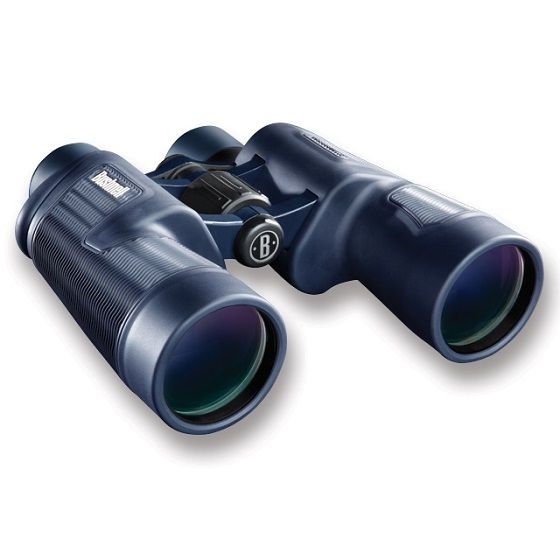CHAPTER 1: KNOW YOUR BINOCULARS
Welcome to the first part of The Beginner’s Guide to Binoculars! We here at OZScopes understand that it can be very confusing for first-time buyers to decide on what binoculars to get and we don't blame you. At a glance, all binoculars look and feel the same up to a point where you feel like you can probably get away with just any type of binoculars. However, we can assure you that not all binoculars are created equal. In this section, we will provide you with the general info you need on binoculars. Experts
TYPES OF BINOCULARS
The function of a binocular is to magnify the view to help us better see distant objects. To achieve this, light passes through a pair of objective lenses forming an upside-down image of whatever you are looking at. The light then passes through prisms within the binocular which will turn the image right side up before it is reflected onto the eyepiece for us to see.

Generally, there are two categories of binoculars depending on the type of prism that they use, Porro Prisms and Roof Prisms.
Porro Prism
This is the most cost-effective binocular prism design. With Porro prisms, the objective lens is not aligned with the eyepiece resulting in a wider build. Binoculars under this category can provide a wider field of view with better depth of field. Most of the time, you’ll be able to find high-quality Porro prism binoculars for less since they are cheaper to manufacture compared to Roof prisms.
Roof Prism
With Roof prisms, both the eyepiece and objective lens are aligned allowing the binoculars to have a more compact design compared to those with Porro prisms. For Roof prisms to work, the light is reflected multiple times against the prism to reduce the optical path. Roof Prisms are more complicated and costly to manufacture. They produce less image depth at long range, as the oculars are closer together, however, they excel at closer distances. Although it sounds like Roof prisms leave a lot to be desired, recent technological advancements have allowed Roof prism binoculars to stand toe to toe with Porro prisms in terms of performance with a much sleeker form factor.
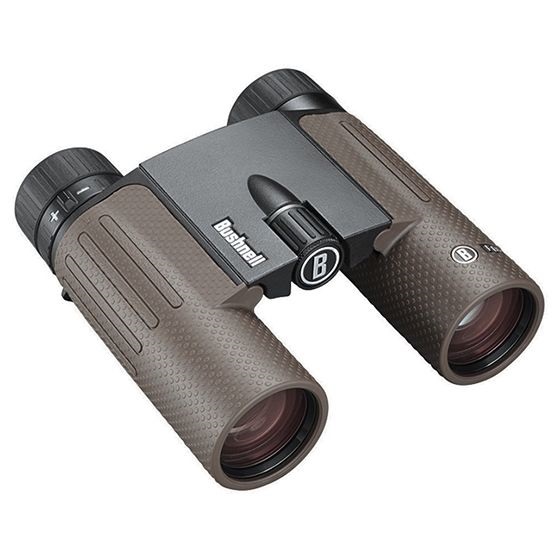
Bushnell Forge 10x30 ED Roof Binocular
In the end, it all comes down to what you want to use binoculars for, personal preference, and budget. Do you want good-quality binoculars with high magnification at a lower price? Or perhaps magnification is not an issue as long as it's compact and easy to carry around. These will be the determining factors when choosing your binoculars. At OZScopes, we have a variety of Porro and Roof prism binoculars from different reputable brands and price points for you to consider.
TECHNICAL TERMS
Understanding the numbers on binoculars
If you look at the examples above for Porro and Roof prism binoculars, you will see that both of them have numbers such as ‘7x50’ and ‘10x30’. The number before the ‘x’ refers to the magnification capability of the binocular, while the number after it is the objective lens diameter, calculated in millimeters (mm). So for ‘7x50’, we know that the binocular has 7x magnification with an objective lens size of 50mm.
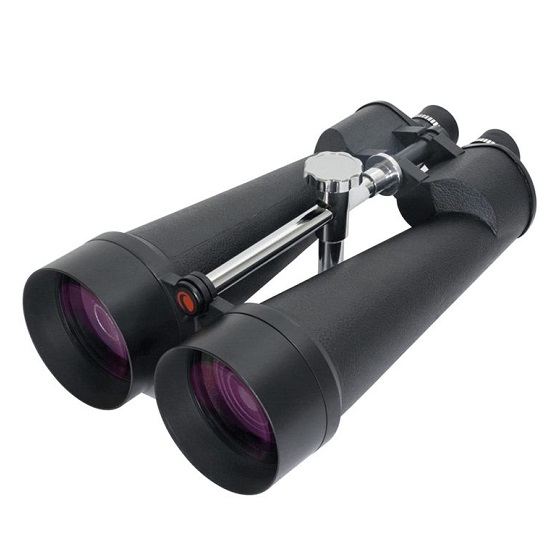
This binocular from Celestron has a 25x magnification with a whooping 100mm objective lens!
Higher magnification binoculars will make further objects appear larger, while a bigger objective lens allows the binoculars to gather more light, resulting in brighter, more detailed images, especially in low-light conditions. It is important to keep in mind that larger objective lenses decrease portability and make the binoculars heavier and bulkier overall.
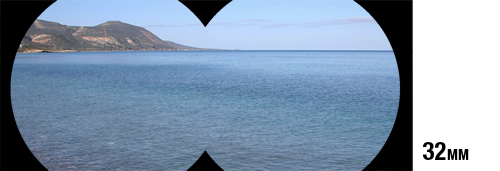
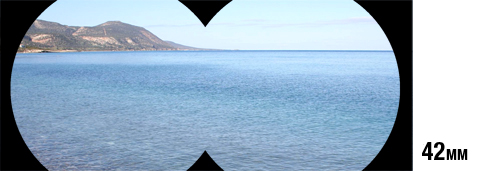
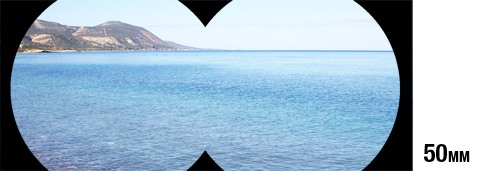
Field of View
This refers to the widest area that you can see through your binoculars at a set distance. They usually decrease as the magnification increases and vice versa. Also, a large objective lens also aids in providing a larger field of view. For close-range observation, binoculars with a wide field of view are preferred.
Eye Relief
For people that wear eyeglasses, eye relief is an important factor to consider before purchasing a pair of binoculars. It refers to the distance that images are projected from the lens to the image plane, which varies from approx. 5mm to 23mm. To be able to use binoculars comfortably while wearing eyeglasses, binoculars must have at least 15mm of eye relief. Forced use of binoculars with shorter eye relief while wearing eyeglasses will lead to a decreased field of view.
Eye relief on binoculars is usually adjustable depending on the eye cups used. Lower-end models often use cheap rubber eyecups that can be folded to adjust the eye relief while higher-end ones usually come with twist-out eyecups.
Focusing
Focusing is the mechanism for the binoculars to adjust their focus to get a clearer image when viewing. There are three types of focusers used in the majority of binoculars nowadays. They are center focus, focus-free, and individual focus.
- With center focus, the adjustment dial is placed on the bridge between the two barrels of the binoculars and when used, they will adjust the focus on both eyepieces symmetrically. There will usually be a diopter control on one of the barrels as well to fine-tune the focus, compensating for any disparity between the left and right eye.
- For individual focus, each eyepiece will come with its own focus adjustment dial to cater to the differences in both eyes, achieving greater image sharpness.
- When it comes to focus-free, the binoculars will not have any focus adjusting mechanism and therefore will rely on your own eye's ability to change focus. Focus-free binos are great for single-handed use, as well as during fast-paced action events. People with poor eyesight should avoid getting focus-free binoculars since they will put a great strain on their eyes.
Moreover, there are a few more things to take into consideration when it comes to focusing. Individual focus is harder to adjust and therefore should be avoided if you are planning to share it between multiple people within a viewing session. Higher-end models with diopter control would sometimes feature a diopter lock to prevent you from accidentally changing the adjustment you made.

Protection Rating
Different binoculars will come with their own protection rating to withstand certain weather conditions. Ultimately, it will determine the conditions that you can safely use your binoculars without damaging them in any way. The ratings commonly found are waterproof, fog-proof, weather resistant, and no rating.
- Waterproof binoculars are built to prevent moisture from getting inside. One way to achieve this is through the use of an O-ring to create an air-tight seal. There are limitations to waterproofing, being either the exposure time to water or the depth that the binocular can withstand. Keep in mind that although they are waterproof they are still susceptible to fogging.
- Fog-proof binoculars are built by pressurizing inert gasses inside the binoculars, creating an oxygen-free vacuum, and keeping the interior of each optical tube moisture free. This prevents fog build-up caused by condensation within the binoculars.
- Weather-resistant binoculars employ the same strategy as fog-proof and waterproof binoculars do, but with lower tolerance. However, they should be more than able to withstand most normal weather conditions.
- No rating binoculars have no protection against their environment. Moisture can easily get inside them which can lead to internal degradation such as rust.
Build Material
Build material concerns the material that houses the optics. Currently, aluminum or aluminum alloy is the most commonly used housing material for binoculars. They are inexpensive, easy to work with, and corrosion resistant, while at the same time being both light and strong.
Magnesium has a good strength-to-weight ratio while being resistant to corrosion and therefore, can have the same durability level as those with aluminum housing while maintaining a lower overall weight. If you are planning to have longer viewing sessions with your binoculars, getting one made out of magnesium is a good choice.
Finally, we have the Polycarbonate. The major advantage that they have is their high tolerance to extreme hot or cold weather conditions. In the long run, Polycarbonates will not undergo any changes from temperature exposure and therefore can maintain their optical performance for years to come. Polycarbonate is known to be easy to work with and inexpensive.
As you can see, buying binoculars is not as simple as it seems to be. Several factors should be taken into consideration to meet your unique needs. If you feel ready to make your purchase, head over to our collection of binoculars at OZScopes or continue with the next section of our beginner’s guide series, where we will explain the different types of binoculars for specific activities.

